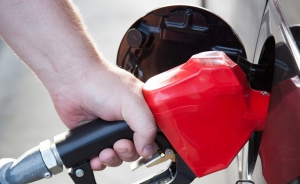Clean Energy Canada | On fuel-efficient cars, where do Canada’s federal parties stand?
June 10, 2019

When
it comes to regulations, there are few things that automakers have wanted more
than certainty and harmonization across borders. Flash back to 2012, when Prime
Minister Harper’s government decided to harmonize vehicle emission regulations
with President Obama’s Environmental Protection Agency, laying out a schedule
of improved performance to 2025.
Looking out to 2025, cars, trucks and SUVs in North America would consume up to 50% less fuel than 2008 vehicles, cutting carbon pollution from these vehicles by that same amount: 50%. While a more fuel-efficient vehicle would likely have a slightly higher sticker price at the dealership, drivers would break even after two years, beyond which they would continue to benefit from lower fuel costs.
More
than a decade of certainty. Canada-U.S. harmonization. And regulations that
held the promise of both saving consumers money through more efficient vehicles
and reducing pollution, leading to healthier communities and a significant
effort to reduce the climate impact of driving.
A
win-win-win for Canadians and the auto sector alike.
So why is the Trump administration now weakening these standards? In short: lobbying from automakers who profit from bigger, less efficient vehicles and an oil industry that fears declining demand for gasoline.
As
for Canada, if we were to follow Trump and weaken them, we’ll fall further
behind our 2030 pollution targets and international commitments under the Paris
Agreement.
And then there’s the savings. While fuel-efficient vehicles can cost more upfront, within a couple years drivers come out ahead. The average car built to comply with 2025 standards will save about $383 a year on fuel, according to one study—for pickup trucks and SUVs, it’s $662.
Trump’s rollback would mean more pollution and bigger
fuel bills.
Enter California. The Golden State is able to set its own pollution and fuel efficiency standards and is taking the Trump administration to court. It’s joined by 16 other states, who together—if Canada were to join them—would make up more than half the market.
So,
does Canada maintain the current standards with those 17 states, or do we
follow Trump and weaken them?
Let’s start with what Canadians think. According to a recent public opinion survey from Pollara and Clean Energy Canada, two-thirds supported keeping the Obama-era standards. Their reasons were what you’d expect: lowering pollution, improving public health, spending less at the pump.
In fact, just 14% of Canadians favoured aligning with
Trump’s freeze. Conversely, 27% said we should strengthen them more, with 36%
saying maintain them as planned.
What’s more, a majority of U.S. auto suppliers back the current standards, and the head of the Canadian Automotive Parts Manufacturers’ Association has signalled concern with a potential rollback, stating, “We have been investing hundreds of billions of dollars in lightweighting and also alternative propulsion…. If that standard is lowered, at this late stage, in some cases, it threatens to strand some of that advanced research and development spending.”
The good news is the federal government has signalled that it’s likely to stay the course with California and others, though we await a final decision. As Environment Minister Catherine McKenna put it earlier this year, “Canada must very seriously consider following the leadership of California on vehicle efficiency regulations. We cannot afford to roll back clean technology—we need to advance it and make it affordable for everyone.”
But
given the timing of the Environmental Protection Agency’s finalization of the
rollback, Canada’s response isn’t going to be determined by the current
government, but by whoever forms government after October 21.
So
the question to all parties is, where do you stand? With California and its 16
state counterparts, or with President Trump?
The answer has big implications for Canadians’ wallets and our efforts to fight climate change.
This article was co-authored by Joanna Kyriazis and originally appeared in The Hill Times.